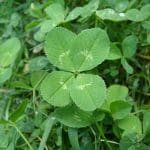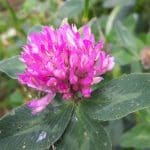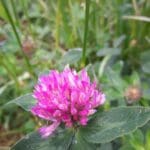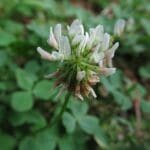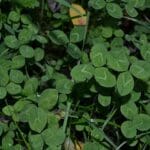Clovers / Edible / Spring / Summer
Common Name
Clover
Botanical Name
Trifolium pratense (red clover) Trifolium repens (white clover) and their relatives
Scientific Classification
Kingdom – Plantae
Order –Fabales
Family – Fabaceae
Physical Characteristics of Clover
Depending on conditions, Red Clover plants can grow up to 80 centimetres in height but is often found much closer to ground level (this is often dependent on whether the grassed area is regularly mown or not.
Flowers
Each flower head is about 2-3 centimetres across, growing like a pom-pom made up of lots of smaller flowers growing from the very centre. The individual flowers are tubular in shape and has 5 narrow petals that can range from pink to red in Red Clover, and cream turning to brown in White clover .
Leaves
The leaflets are oval or ovate and tend to be broader in the middle. Each leaf splits into three (hence the trefoil) and often look like three sets of hearts or butterfly wings connecting at one central point. (although if you’re incredibly lucky you may find one with four sets of leaves). Often there’s a light marking across each leaf that looks like a pale eyebrow. There are usually 1-3 leaflets immediately beneath each flower head.
Habitat
Found all over the UK and Northern Europe in grassy areas, farmers fields, playing fields, roadsides and disturbed ground
Known Hazards
Clover is generally considered safe for most people, but it may cause mild side effects such as headaches, nausea, or skin rashes. These are typically rare.
Could be Confused with
Could be confused with Wood Sorrel or other Clovers, i.e. White confused for Red clover when not in flower. The only thing to be mainly wary of that grows in a similar habitat is Birds Foot Trefoil – it has a yellow flower that is completely different but before it goes to flower there’s potential to confuse them. Birds Foot trefoil has a bird foot shaped leaf which Clover doesn’t have.
Edible Uses
Clover is best used as a salad ingredient and the flowers bring a fantastic colour to any dish both sweet and savoury.
March – August (Spring/Summer)
Notes on Herbal uses
In the past clover has been used for cancer prevention, indigestion, high cholesterol, whooping cough, cough, asthma, bronchitis, and sexually transmitted diseases (STDs). Some women use red clover for symptoms of menopause such as hot flashes; for breast pain or tenderness (mastalgia); and for premenstrual syndrome (PMS).
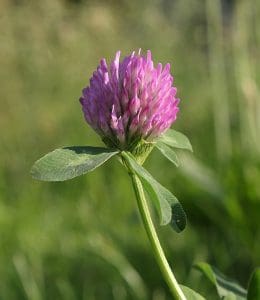
Extra notes from the Foragers
If you can get to the flowers before the bees they have a slightly sweet flavour.
The four-leaf clover is said to represent good luck and good fortune, some link it to being in favour with the gods. The three-leaf is also seen as being lucky with its references and links to the holy trinity.




